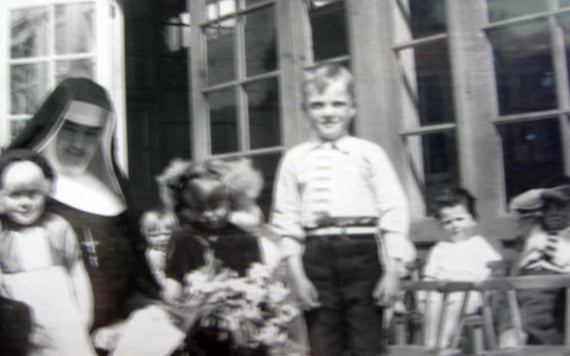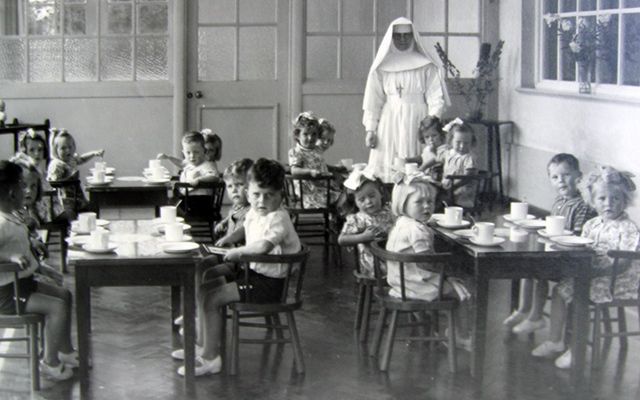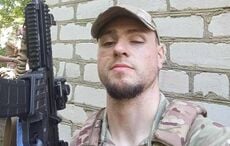At least 6,000 Irish children died in the now notorious mother and baby homes throughout Ireland, but the nightmare doesn't end there. Eighteen children, mostly girls, mostly mentally handicapped, were starved to death.
Details are emerging of the horrific stories behind some of the 796 deaths at the Tuam mother and baby home.
Irish leader Enda Kenny made an impassioned speech in the parliament yesterday calling Tuam a “Chamber of Horrors.”
He stated. “No nuns broke into our homes to kidnap our children.
“We gave them up to what we convinced ourselves was the nuns’ care.
“We took their babies (unmarried mothers) and gifted them, sold them, trafficked them, starved them, neglected them or denied them to the point of their disappearance from our hearts, our sight, our country and, in the case of Tuam and possibly other places, from life itself.”
Twelve of the 18 who starved were girls and there is a suspicion that some were mentally retarded. Bridget Agatha Kenny was two months old when she died as a result of marasmus, child malnutrition, on August 23, 1947. She is described as having been ‘mentally defective.'
She was one of 18 children whose cause of death was listed as child malnutrition or the official term “marasmus.”
Marasmus is a form of severe malnutrition characterized by energy deficiency. A child with marasmus looks utterly emaciated with ribs protruding. Body weight is reduced to less than 60% of the normal body weight for the age.
The new details raise the shocking specter of children dying of starvation in Ireland 100 years after the Famine.

Children in a playroom at a Mother and Baby Home (Via: Adoption Rights Alliance).
In 2014 it was revealed in a report compiled by Michael Dwyer of Cork University’s School of History 2,051 children from state-run homes were used as medical guinea pigs for the pharma giant Burroughs Wellcome during the 1930s. He came to this conclusion after trawling through tens of thousands of medical journal articles and archived files.
Dwyer told the Daily Mail in 2014, “What I have found is just the tip of a very large and submerged iceberg.
“The fact that no record of these trials can be found in the files relating to the Department of Local Government and Public Health, the Municipal Health Reports relating to Cork and Dublin, or the Wellcome Archives in London, suggests that vaccine trials would not have been acceptable to government, municipal authorities, or the general public.
“However, the fact that reports of these trials were published in the most prestigious medical journals suggests that this type of human experimentation was largely accepted by medical practitioners and facilitated by authorities in charge of children’s residential institutions.”

Children taking the air, accompanied by nuns at a Mother and Baby home (Via: Adoption Rights Alliance)
There were nine homes in all and it is now also a confirmed fact that between 1940 and 1965 Saint Patrick's, on the Navan Road in Dublin, and its sister hospital, Saint Kevin’s, “donated” the bodies of at least 461 deceased babies for routine dissection practice in all the major medical teaching institutions in the state, including Trinity College Dublin, The College of Surgeons and University College Dublin’s medical school.
No questions were asked where the baby bodies came from.
Following the excavation of “significant quantities of infants' remains” at the Tuam site of the Bon Secours’ Mother and Baby Home the case has been handed over to the gardai (police). The case of the mass grave, homed in two underground sewerage structures, was referred to the north Galway coroner by the Mother and Baby Home Commission of Investigation.
As more widespread investigations into burial plots and Mother and Baby Home records across Ireland are called for the Coalition of Mother And Baby home Survivors released a statement, a rundown of facts already known about the Catholic Church’s Mother and Baby Homes. Among them is the fact that the children in the church’s care were used for medical experimentation and drug trials.
In 2011, RTE’s investigative current affairs show, "Prime Time" revealed that hundreds of the bodies of babies born in Ireland’s Mother and Baby were sent from the homes to Irish medical colleges. They also reported that other children were vaccinated in the homes with experimental drugs and closely monitored for side effects.
According to Dwyer’s report from 2014, no consent was ever sought by the Mother and Baby Homes for these medical procedures. These vaccine trials were carried out on Irish babies before the drugs were eventually made available for commercial use in the United Kingdom.

Nun sits with young boy and other children at a Mother and Baby Home. (Via: Adoption Rights Alliance)
Among those homes listed were Bessborough, in County Cork, and Sean Ross Abbey in Roscrea, County Tipperary. Both of these homes are included among the mass grave investigations being sought by survivors and campaigners.
The report states that other institutions where children may also have been vaccinated include Cork orphanages St Joseph’s Industrial School for Boys, run by the Presentation Brothers, and St Finbarr’s Industrial School for Girls, run by the Sisters of the Good Shepherd. Dublin trials may have involved children from St Vincent’s Industrial School, Goldenbridge, St Joseph’s School for Deaf Boys, Cabra, and St Saviour's Dominican Orphanage.
A spokesman for GSK – formerly Wellcome – told the Irish Daily Mail: “The activities that have been described to us date back over 70 years and, if true, are clearly very distressing.”

Children at the Bon Secour Mother and Baby Home, in Tuam, County Galway.
At the time of the report Ireland’s Taoiseach (Prime Minister) Enda Kenny called for a countrywide investigation into these practices and the burial plots at Tuam, and other Mother and Baby Homes.
According to the 2011 "Prime Time" documentary, the Polio vaccine was developed during the 1950s. While this led to a decrease in such diseases as diphtheria, tetanus, and whooping cough, however this new drug brought on an increase in the amount of child research performed. Much of the research was consequently performed in children’s institutions through the 1960s. There are no records that show consent from the mothers in the homes. “It was clear from the report that there was no parental consent,” reports the documentary. “There was a violation of the physical integrity of the children.”
Before Dwyer’s 2012 report, a damning report by the Irish government’s Health Service Executive (HSE) found that the Irish Catholic mother and child homes had an infant mortality rate of 68% in 1943. The report shows that, according to the Register of Deaths, Bessborough Mother and Baby home during certain months in the 1940s the death rate among children living in the home amounted to a child dying roughly every second day.
More than 80 of the 472 infant deaths have malnutrition listed as the cause of death.
The reports also showed that as time went on, the standard of the death records kept decreased dramatically. It is the case that for hundreds of children listed it was unclear when exactly the death took place and it appeared that many were recorded at the same time.
Read more: Tuam Babies - “It would be... kinder to strangle these children at birth” said doctor




Comments